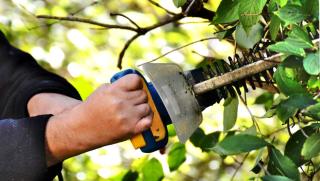

Hedges are important for biodiversity. Birds, for instance, love building their nests in them. It makes sense to regulate when to work on hedges and when to keep them undisturbed. Regulations on trimming and removing hedges is what helps coordinate this effort as a community. Each country, state and even municipality might have its own rules depending on the local environment. Also, such efforts are often the sign of a mature community that is already able to consider the importance of protecting nature as it pursues its day-to-day business.
A hedge is controlled growth, typically along a line, where shrubs and trees are kept lower than they would naturally grow. Hedges often mark the border between two properties. Occasionally, they line roadsides. Increasingly, they’re considered an essential component of protected landscapes.
Humans are the reason hedges exist: without people, the environment would evolve to reach a stable stage which is usually a forest setting.
We’re learning that when we work with nature instead of simply dominating it, we create a richer world for all to share: us, animals and plants. Regulations help guide us in this endeavor. When based on observation and understanding, such rules truly lead to a thriving community.
The primary functions are to provide privacy and mark property lines. Single-species evergreen hedges excel at this, but they often fall short of the many other uses of hedges:
There are two types of regulations. Originally, local laws would make hedge work mandatory. For instance, in many places you can’t let a hedge run wild. There are height limits to follow, and trimming regularly is mandatory. This is important because it helps smooth relationships between people. Neighbors don’t fight anymore about hedges growing out of control, encroaching on the other’s gardens. This group of laws describe the obligations related to owning or sharing a hedge.
The second type of regulation is rather new: it aims to protect and promote respecting nature. Typically, you can’t trim or remove a hedge during the nesting season for birds. Indeed, many birds prefer hedges to nest because they’re perfect hiding places while staying convenient (close to sources of food and water). When you trim a hedge with nests in it, you’re certain to damage the nest, even break the eggs. If this happens too often, wild birds don’t succeed in reproducing. Such laws are called nature conservation laws or environmental protection laws.
Today, local governments are trying to strike a balance between both equally important goals.
In Canada, the Migratory Birds Convention act protects nesting birds. Though there is no official date range for hedge and garden work, generally end of March to mid-August is considered the “nesting period” for most bird species. Trimming a hedge and killing chicks might lead to fines if you’re caught, so best avoid taking the risk in the first place!
In the United States, each State has different set-ups regarding environmental protection laws. Generally, obligation laws are well enforced, requiring permits to remove large trees and clarifying responsibilities.
Interestingly, some states like California even have a “spite hedge law”: it allows for resolving cases where one neighbor plants a tall hedge to hassle or exact petty revenge on another neighbor… Truth be said, asking courts and lawyers to sort things out rarely restores friendship between the protagonists!

In France, similar regulations apply, but the nesting season is officially shorter: it runs from March 15th to end of July instead of August. If it’s an agricultural hedge (along crop fields), April 1st is the start date.